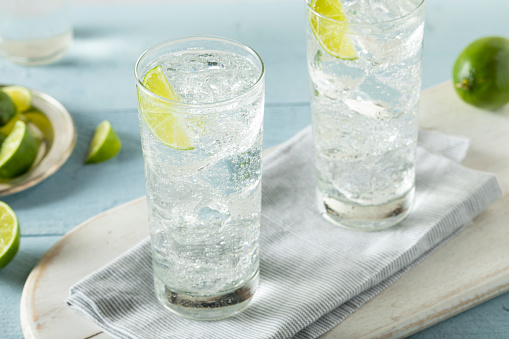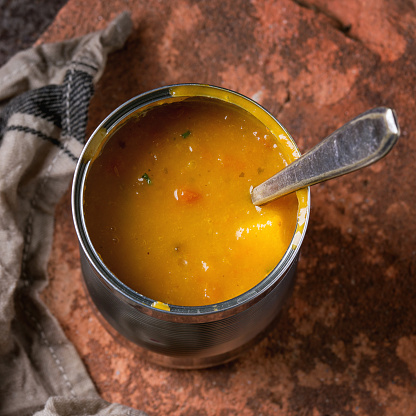Is your brand dressing for the job it wants? Using insights to future proof your business
Editor’s note: Mary Mathes is director of data insights for Cincinnati-based marketing research firm Alpha-Diver.

As marketers and insights professionals, we’re always trying to predict the future, which is a dicey endeavor in the best of times, and a particularly precarious one at present. Trying to deduce what will happen during the next quarter (or the next year) so we can position our business accordingly doesn’t truly empower us, it makes us victims of the scenarios we’ve developed and whether they play out … or don’t.
Brand marketing should create the future we want, not just react to the one we expect.
Understanding consumer psychology provides a bridge that can allow us to do this. Whether it’s COVID, inflation or an election, there will always be a stressor – some event or force that happens – and there will always be a human reaction to it. Market research has known for years that people are terrible at explaining their own behavior, and yet, how they’ll react to stressors is the thing we can predict, because neuroscience and psychology tell us there are only a handful of possibilities.
At Alpha-Diver our approach is based on the understanding that the psychology that drives how people react enables you to “future proof” your business. This can be approached using a neuroscience-derived model that implicitly measures and gauges the trajectory of the three big directions human behavior could go, or the three need states. As humans we cycle continuously through these needs to either belong, rebel or discover.
My company predicts that we’re heading into an era of discovery, where people will increasingly react to stressors by seeking to explore personal truths and their individuality to uncover new, better ways of being and doing. The COVID pandemic and all the other stressors that followed did not cause this shift, but they have precipitated it.
Think about all the things we have already discovered can work for us in the past year and a half: grocery shopping online, working from home, rethinking how we socialize, etc. Brands that align with this shift toward discovery and enable it for consumers are positioned to do well, despite many unknowns in the marketplace.
To illustrate, let’s look at three current examples from disparate categories. In all three cases, whether intentionally or by happy accident, these brands are packaging and positioning themselves to appeal to the discover-oriented consumer mind-set. In other words, they’re dressing for the job to be done that consumers increasingly want, even if it’s not the job they currently have.
Boston Beer Company
 Boston Beer Company has gone all-in on the hard seltzer trend of late, putting a lot of focus on marketing and expanding its Truly brand. Now, returning to my thesis that predicting the future is difficult, you may have heard that the company recently took a stock hit when they significantly overestimated sales growth for Truly. The C-suite cited several factors that made it difficult to accurately predict what would happen with the hard seltzer market this year, such as the proliferation of brands and returning to away-from-home consumption occasions (where seltzer doesn’t have a strong foothold). However, despite these missed traditional predictions, Wall Street analysts are still bullish on the stock, rightly noting that the Truly story is still quite positive: the brand is growing share and gaining on the No. 1 hard seltzer, White Claw.
Boston Beer Company has gone all-in on the hard seltzer trend of late, putting a lot of focus on marketing and expanding its Truly brand. Now, returning to my thesis that predicting the future is difficult, you may have heard that the company recently took a stock hit when they significantly overestimated sales growth for Truly. The C-suite cited several factors that made it difficult to accurately predict what would happen with the hard seltzer market this year, such as the proliferation of brands and returning to away-from-home consumption occasions (where seltzer doesn’t have a strong foothold). However, despite these missed traditional predictions, Wall Street analysts are still bullish on the stock, rightly noting that the Truly story is still quite positive: the brand is growing share and gaining on the No. 1 hard seltzer, White Claw.
Why is that happening? Because while Boston Beer’s C-suite missed the mark on some market forces, its brand messaging and packaging have better predicted and positioned against consumer psychology, specifically the discover reaction. Truly’s current campaign, “No one is just one flavor,” aims to showcase “the colorful and adventurous nature of Truly drinkers,” according to CEO Dave Burwick. The brand website and ad copy invite consumers to explore their flavors, discover new experiences and celebrate them as multi-faceted individuals. The messaging and brand packaging are colorful, sensorial and highly visual, enticing consumers to imagine what the consumption experience will be like.
If you look at White Claw for comparison, its positioning is more focused on belonging, a need state that’s out of touch with the growing cultural and psychological zeitgeist. Current White Claw marketing emphasizes groups of people drinking the brand together in social situations, with the tagline “Let’s White Claw.” By dressing and celebrating Truly as a brand for individuals, it’s no surprise Boston Beer Company is gaining ground, even in a tough-to-forecast market space.
Campbell Soup
Campbell Soup saw huge increases in household penetration during the pandemic last year, especially among Millennials, and has set a goal of maintaining those new consumers even as things open back up.
 One way they’ve set out to do this is with a change (for the first time in decades!) to the imagery on the packaging of their core condensed soup cans: they’re adding a picture of the variety’s key ingredient(s). Along with this more evocative, projective imagery (a ripe, plump tomato for example, instead of the old highly verbal can that just stated the variety name), the campaign invites consumers to “get ready to create,” and promotes recipe ideas across several owned media platforms to help consumers go beyond simply making soup with the product. While this “wardrobe” change is subtle, it’s savvy and suggests Campbell’s is keyed in to play to consumers’ need to explore, discover and create new things for themselves.
One way they’ve set out to do this is with a change (for the first time in decades!) to the imagery on the packaging of their core condensed soup cans: they’re adding a picture of the variety’s key ingredient(s). Along with this more evocative, projective imagery (a ripe, plump tomato for example, instead of the old highly verbal can that just stated the variety name), the campaign invites consumers to “get ready to create,” and promotes recipe ideas across several owned media platforms to help consumers go beyond simply making soup with the product. While this “wardrobe” change is subtle, it’s savvy and suggests Campbell’s is keyed in to play to consumers’ need to explore, discover and create new things for themselves.
pOpshelf
 One of the most exciting and surprising stories in the retailer space during COVID has been the success of pOpshelf, a new concept by Dollar General that is managing to thrive as a brick-and-mortar business designed to encourage shoppers to linger in-store despite a pandemic. How are they doing it? By providing a uniquely experiential shop that taps into that drive to discover and explore that’s emerging for shoppers.
One of the most exciting and surprising stories in the retailer space during COVID has been the success of pOpshelf, a new concept by Dollar General that is managing to thrive as a brick-and-mortar business designed to encourage shoppers to linger in-store despite a pandemic. How are they doing it? By providing a uniquely experiential shop that taps into that drive to discover and explore that’s emerging for shoppers.
pOpshelf’s “about us” statement is tailor-made for the discover era: “We believe shopping should be an experience you enjoy. A time to wander. Explore. Linger. A momentary escape just for you...” Their stores are designed to encourage browsing, exploration and immersion in the possibilities on offer; the shop experience has been likened to a treasure hunt. While they offer an e-commerce component, it’s clear that the optimal way to experience the store is in-person (and their online shopping still requires you to pick up at the physical store; there’s no delivery). So far, the strategy is working: Dollar General has already upped its planned standalone store openings from 30 to 50 this year, as well as introducing 25 “store-in-store” pop-ups within existing Dollar General locations.
Research and strategic development
In closing, I’ll leave you with two questions to ponder about your brand:
- Are you aligned with the individual or the collective?
- How is your brand “dressing” and showing up for consumers to encourage personal discovery, no matter the market forces and stressors to come?
Focusing on the three needs states in your research and strategic development can equip your business with a wardrobe for any occasion – whatever specifics the future may hold.
